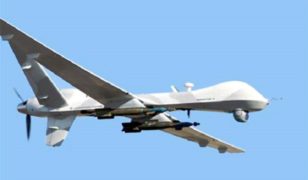Mike White to lead air and missile defense at Johns Hopkins University Applied Physics Laboratory
 Mike White has been named head of the Air and Missile Defense Sector at the Johns Hopkins University Applied Physics Laboratory (APL) in Laurel, MD, APL announced August 29. As sector head, White will oversee all work related to an APL mission that traces its roots to the laboratory’s founding project, the radio proximity fuze.
Mike White has been named head of the Air and Missile Defense Sector at the Johns Hopkins University Applied Physics Laboratory (APL) in Laurel, MD, APL announced August 29. As sector head, White will oversee all work related to an APL mission that traces its roots to the laboratory’s founding project, the radio proximity fuze.
White, who had served as Air and Missile Defense mission area executive since 2005, succeeds Conrad Grant, who led the sector for 11 years before being named APL’s chief engineer earlier this year. During their tenure the laboratory continued its legacy of making game-changing, innovative contributions and steadily increased the impact of those contributions to the nation’s air and missile defense capability.
In 2008, APL missile defense experts were key members of the team that carried out Operation Burnt Frost, during which a Standard Missile-3 was rapidly modified and fielded aboard a Navy ship to successfully down an inoperable U.S. satellite whose uncontrolled reentry into Earth’s atmosphere posed a potential threat to populated areas. More recently, the laboratory played essential roles in guiding the Naval Integrated Fire Control-Counter Air, Standard Missile-6 and Aegis Ashore to initial operational capability.
“Mike’s demonstrated leadership and technical competence during his career at APL have uniquely qualified him for this assignment,” said Director Ralph Semmel. “He knows the sector, its people, its capabilities, and he understands the critical challenges facing our sponsors. Mike is well suited to take the sector to a new, even higher level of achievement.”
During White’s 35-year APL career, he has served in a succession of leadership roles with increasing responsibility, including assistant business area executive for precision engagement and program area manager for advanced vehicle technologies. He earned both his Bachelor of Science and Master of Science degrees in aerospace engineering from the University of Maryland.
Source: APL








